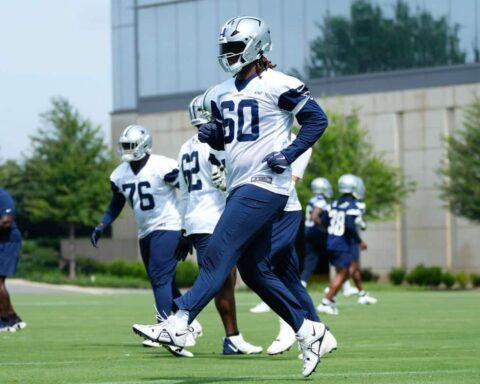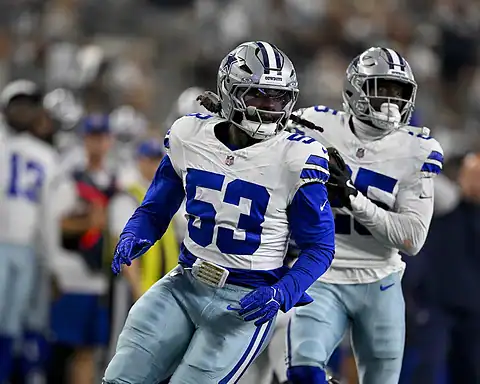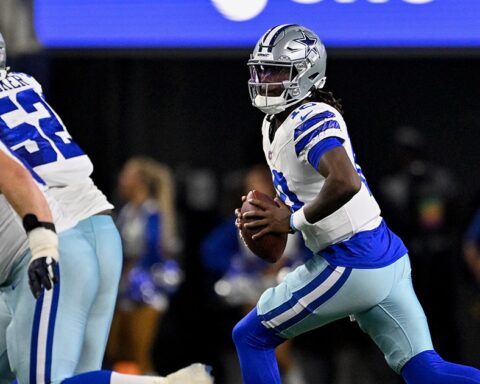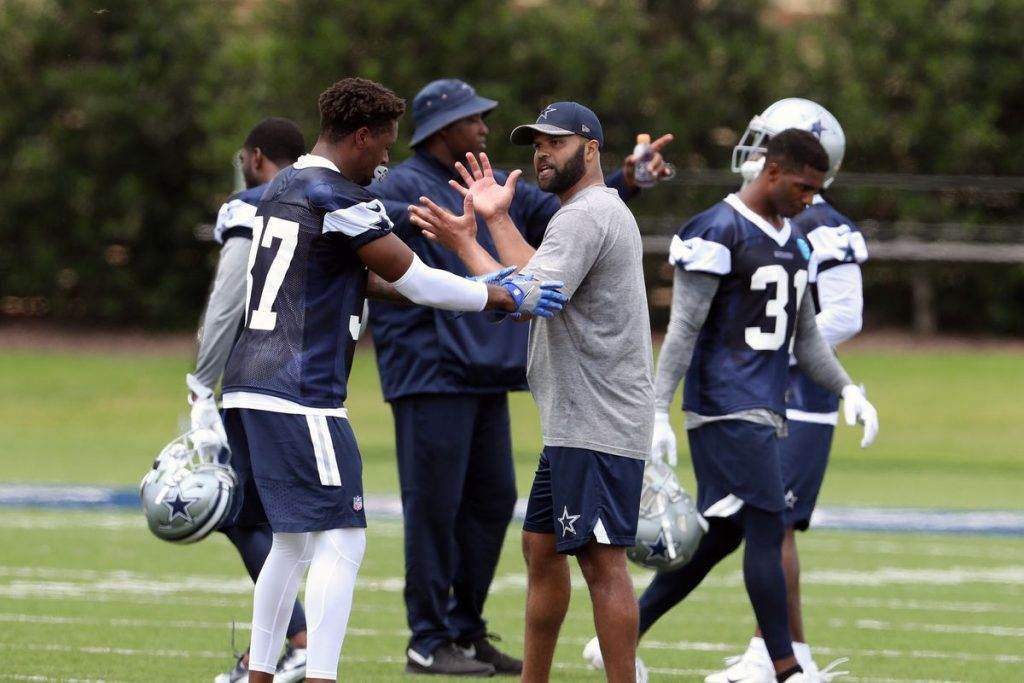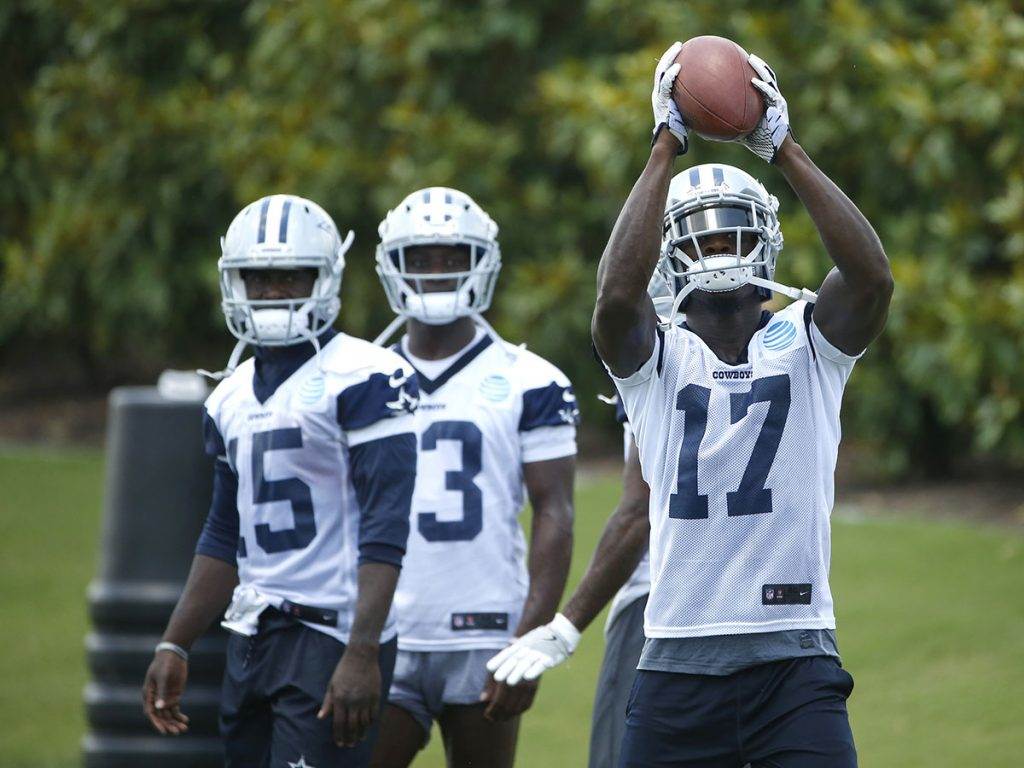I don’t know if any one player has caused more debate or controversy among Cowboys fans the last few months than newcomer Tavon Austin.
First, fans were shocked and confused when the Cowboys not only traded for Austin on draft day but then traded away second year wide receiver Ryan Switzer not-long-after. Switzer had become a bit of a fan favorite in Dallas, and the trade was surprising to say the least.
Arguments also ensued about what the Cowboys even saw in Austin, who’s lackluster production and inconsistency allowed the Rams to trade him away for just a day three draft pick in return.
Then came the controversy over what to call Austin. Is he a receiver? Is he a running back? Does it even matter?
Well, if the Cowboys plan to use Tavon Austin in the way it is anticipated, then no. The designation of what a player “is” really doesn’t matter, especially as both offenses and defenses move toward hybrid types in this next evolution of the game.
But what do the Cowboys see in Tavon Austin? And can they really find a way to make whatever they see in him effective in what some consider a “vanilla” offense in Dallas?
Probably the most obvious fit for Tavon Austin with the Cowboys is in the jet motion package of plays. With his speed and burst Austin fits the bill of a jet motion player, forcing defenses to tip their hand and giving the offense a lot of options at the snap of the ball.
They could hand Austin the ball on a jet sweep, they could run play action and use him as a receiver out of the motion, or they could even simply just use his motion as misdirection to muddy up the defenders’ reads.
The Cowboys found success using Lucky Whitehead in those jet sweep plays in 2016, and were unable to replace his production/threat with Ryan Switzer in 2017. It would make sense for them to try Tavon Austin in this role.
This jet motion was used against the Cowboys plenty in 2017, as we see in the play above. Here Austin is used in play action to draw the linebackers and safeties attention. As you can see, each of the playside second level defenders snap their eyes to Austin at the mesh point.
This distraction allows running back Todd Gurley to get out of the backfield and behind the defenders, taking his reception for a touchdown right up the seam.
Dallas has been reluctant to use Ezekiel Elliott as a downfield pass catcher, but Austin’s presence could open up opportunity for them to do so.
During this same game, Tavon Austin ran the ball 6 times for 48 yards, most of which came off the jet motion. Dallas’ linebackers lacked the speed to contain Austin, and were forced bite on the play fake allowing Gurley the easy touchdown on this particular play.
Rams head coach Sean McVay was also able to get Tavon Austin the ball on the perimeter in other ways in 2017. Against the Giants here, we see Austin motion to what is essentially a traditional single back look. Austin never stops his motion, however, and receives the pitch on a toss play.
The Rams get blockers out in front and allow Austin space to work with and a running start prior to hitting the line of scrimmage. They utilize a pin-and-pull on the perimeter, getting their left tackle up and through to the second level.
The Cowboys have wide outs who can block, and of course have the athletic left tackle who can pull and lead as well.
Another “creative” way the Rams got Austin the ball in 2017 was by simply lining him up as a regular running back. Of course, you aren’t going to ask the 5’9″ 175 pound runner to pound it between the tackles like Ezekiel Elliott, but you can get him on the perimeter and in space from the backfield as well.
If Tavon Austin is going to be effective in Dallas, Scott Linehan is going to have to do some things which seem counter-intuitive to the Cowboys current roster construction. Mainly, he will need to start utilizing 10 personnel to open up the offense and allow Austin more room to work with.
Even if he refuses to do so on a regular basis, however, Austin can still be an interesting change of place player out of jet motion packages. He can be used to muddy up defenders’ reads and keep linebackers honest off the play action.
It’ s important to remember that he is a receiver, however, and I do believe Austin should be asked to run routes no matter his alignment.
Unlike much of Cowboys Nation, I have faith that the Cowboys have a vision for how Tavon Austin will work within their offense, even if he only fills that role for a single season.


